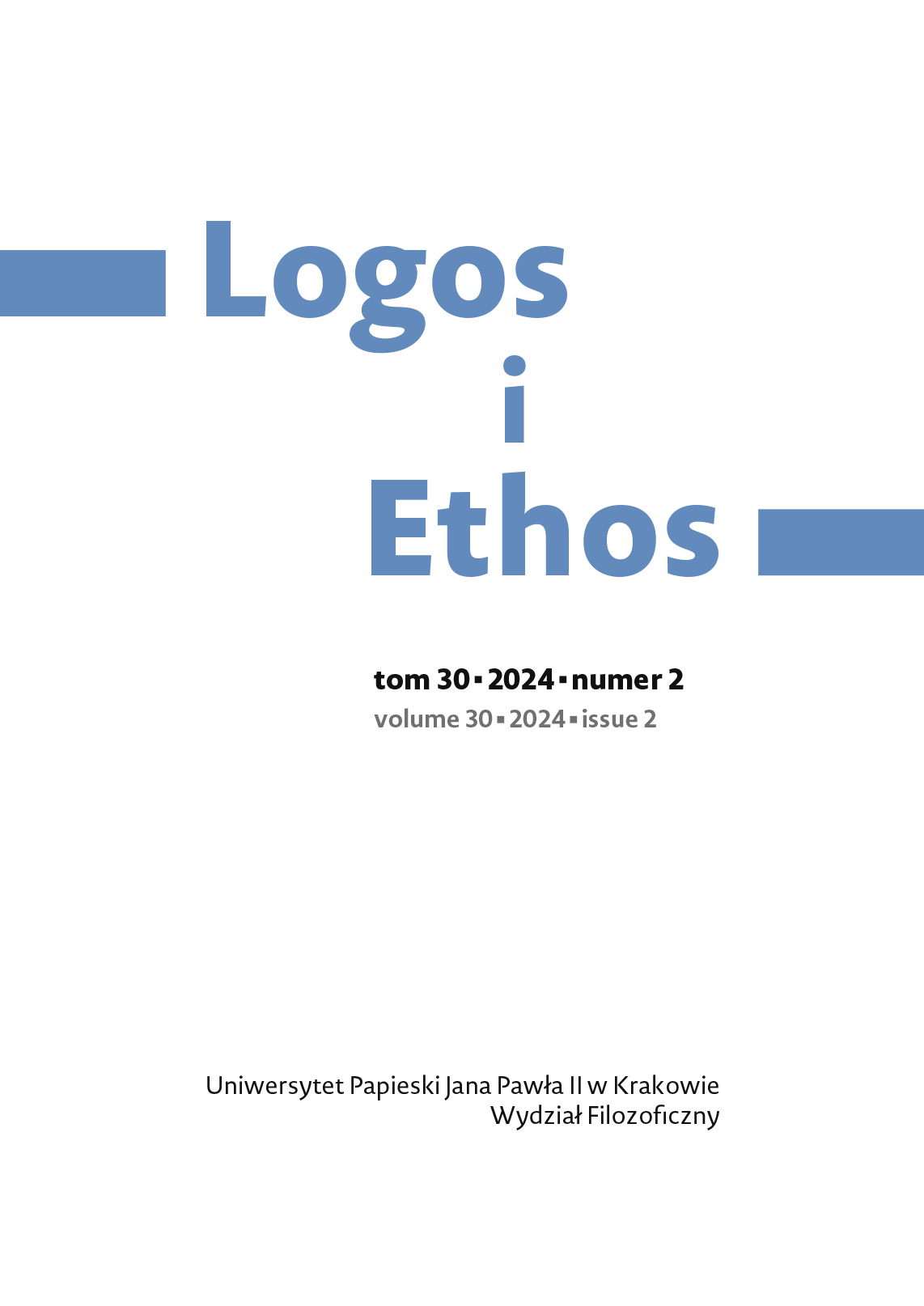Artificial intelligence: asking about its ontological status
DOI:
https://doi.org/10.15633/lie.30205Słowa kluczowe:
sztuczna inteligencja (AI), status ontologiczny, osoba, osoba granicznaAbstrakt
Artykuł dotyczy statusu ontologicznego sztucznej inteligencji. Czy jest to osoba czy rzecz, a może byt pomiędzy światem ludzkim a materialnym? Koncepcja osoby granicznej jest rozważana jako możliwa przestrzeń konceptualna do przyjęcia AI i jej przyszłych realizacji. Pojecie osoby granicznej zostało pierwotnie ukute w badaniach bioetycznych z zastosowaniem do wyższych zwierząt. W rozumieniu osoby biorącym swój początek od definicji Johna Locke’a „osoba graniczna” jest terminem inkluzywnym i prowadzi do traktowania AI tak, jakby była osobą. W post-Boecjańskiej filozofii „osoba graniczna” ma charakter negatywny i działa jako termin wykluczający; nakazuje traktowanie sztucznej inteligencji i wszystkich jej wcieleń jako wysoko rozwiniętych narzędzi, które być może dochodzą do granic ludzkiego świata, ale nigdy do niego nie wkraczają. Praktyczne przewidywania dotyczące możliwości zastosowania AI sugerują, że to drugie podejście jest bardziej odpowiednie.
Bibliografia
Baidoo-Anu D., Ansah L. O., Education in the era of generative artificial intelligence (AI): understanding the potential benefits of ChatGPT in promoting teaching and learning, “Journal of AI” 7 (2023) no. 1, p. 52–62, https://doi.org/10.61969/jai.1337500.
Bashash D., Faranoush M., Artificial intelligence (AI): the next stage of evolution?, “Iranian Journal of Blood & Cancer” 15 (2023) issue 3, p. 1–3, https://doi.org/10.61186/ijbc.15.3.1.
Bostrom N., Superintelligence. Paths, dangers, strategies, Oxford 2014.
Chen J., Burgess P., The boundaries of legal personhood: how spontaneous intelligence can problematise differences between humans, artificial intelligence, companies and animals, “Artificial Intelligence and Law” 27 (2019) issue 1, p. 73–92, https://doi.org/10.1007/s10506-018-9229-x.
Cheng‐Tek Tai M., The impact of artificial intelligence on human society and bioethics, “Tzu Chi Medical Journal” 32 (2020) issue 4, p. 339–343, https://doi.org/10.4103/tcmj.tcmj_71_20.
DeGrazia D., On the question of personhood beyond Homo sapiens, in: In defense of animals. The second wave, ed. P. Singer, Malden 2006, p. 40–53.
Elgammal A., Mazzone M., Artists, artificial intelligence and machine-based creativity in “Playform”, “Artnodes” (2020) no. 26, p. 1–8, https://doi.org/10.7238/a.v0i26.3366.
Fletcher J., Humanhood: essays in biomedical ethics, New York 1979.
Jonas H., The imperative of responsibility: in search of an ethics for the technological age, transl. H. Jonas, Chicago 1984.
Kurzweil R., The singularity is near: when humans transcend biology, London 2005.
Locke J., Essay concerning human understanding, vol. 1, Oxford 1894, https://doi.org/10.1093/oseo/instance.00018020.
Sandberg A., An overview of models of technological singularity, in: Transhumanist reader, eds. M. More, N. Vita-More, Malden 2013, p. 376–394, https://doi.org/10.1002/9781118555927.ch36.
Spaemann R., Is every human being a person?, “The Thomist” 60 (1996) no. 3, p. 463–474, https://doi.org/10.1353/tho.1996.0013.
Spaemann R., Persons. The difference between “someone” and “something”, transl. O. O’Donovan, Oxford 2006.
Wojtyła K., Ethics primer. Elementarz etyczny, transl. H. McDonald, Lublin 2017.
Wojtyła K., Love and responsibility, transl. H. T. Willetts, San Francisco 1981.
Pobrania
Opublikowane
Numer
Dział
Licencja

Utwór dostępny jest na licencji Creative Commons Uznanie autorstwa 4.0 Międzynarodowe.
Autorzy publikujący w czasopiśmie udzielają jego wydawcy zgody o następującej treści:
- Autor zachowuje autorskie prawa majątkowe do utworu, a jednocześnie udziela wydawcy czasopisma zgody na jego pierwszą publikację w wersji drukowanej i wersji online na licencji Creative Commons Uznanie autorstwa 4.0 Międzynarodowe oraz zgody na wykonywanie opracowań, w tym przekładów.
- Autor ma możliwość udzielania zgody niewyłącznej na opublikowanie utworu w wersji, która ukazała się w czasopiśmie (np. zamieszczenia go w repozytorium instytucjonalnym lub opublikowania w książce), wraz z informacją o jego pierwszej publikacji w czasopiśmie.
- Autor może umieścić swój utwór online (np. w repozytorium instytucjonalnym lub na swojej stronie internetowej) jeszcze przed zgłoszeniem utworu do czasopisma.

